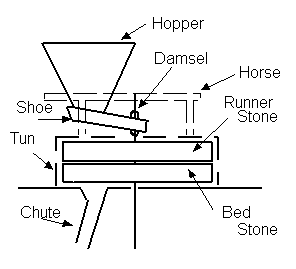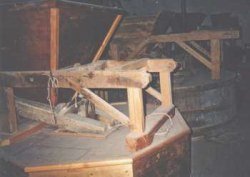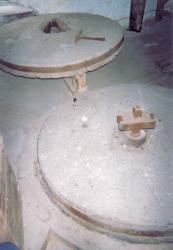 
|
|
|
|||
|
The grain was poured into the hoppers from the top floor above. A 'damsel' attached to the stone shaft would turn and jiggle the 'shoe' allowing the grain to fall through the eye of the top or 'runner' stone - the speed of the flow of grain could be altered by adjusting a belt which adjusted the slope of the shoe under the hopper. |
|||
|
|
|
||
|
Only the runner stone would rotate with the bottom or 'bed' stone being fixed. The pattern chiselled into the face of each stone would grind the grain and channel it out to the sides. The two stones must never touch and are separated by a minute gap, this gap can be altered by tightening a bolt or crank which raises the shaft connected to the runner stone. The ground grain spills out from the edges of the stones into the wooden 'tun' which surrounds them. The draught inside the tun keeps the flour/meal spinning round until it falls to the ground floor down a chute underneath. |
|||
|
|
|
||
| < Mill Workings | ^ top of page ^ | Making Flour > | |


